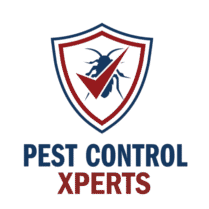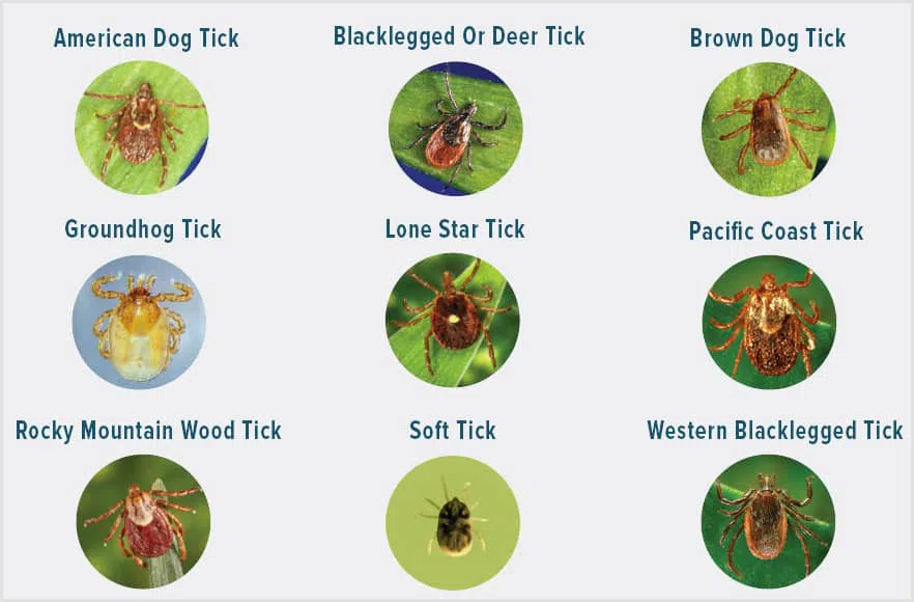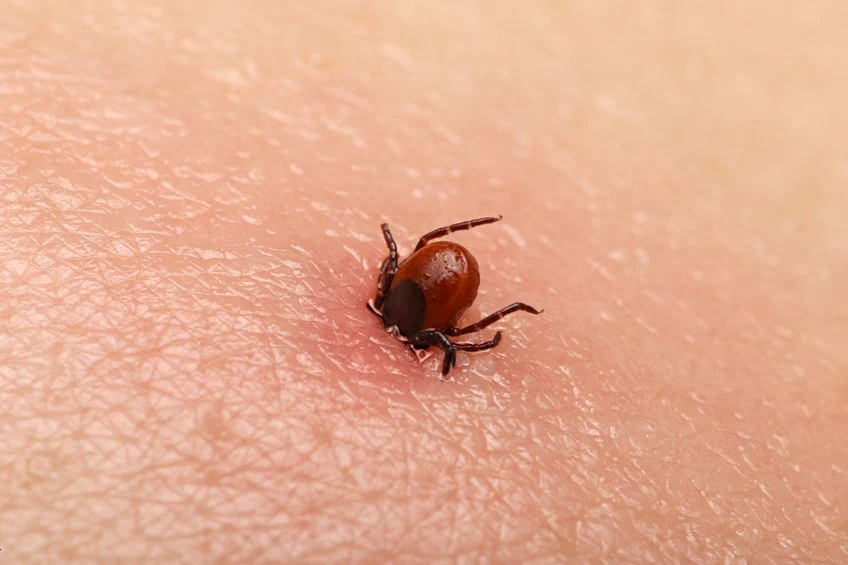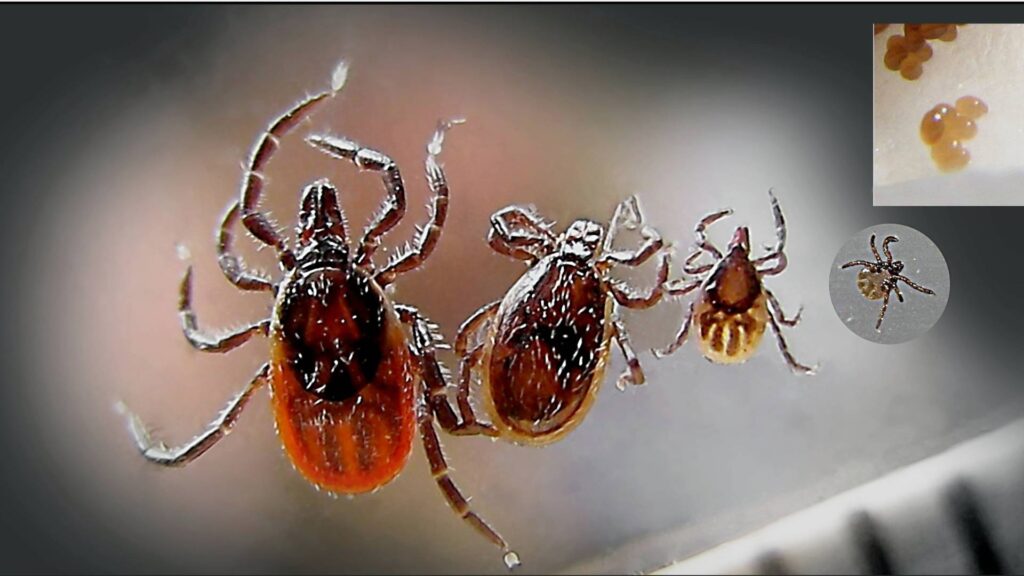Tick Removal in Ohio
Serving residences and businesses throughout Austintown, Canfield, Deerfield, and Elkton
Ticks create ongoing concerns for property owners who want safe, comfortable living conditions without worrying about bites or potential diseases. Because these small arachnids feed on blood, they latch onto people, pets, or wildlife traveling through yards, grassy areas, or wooded spots. Ticks can slip indoors on clothing or fur, hiding in carpets or corners. For residents in Austintown and the nearby areas of Canfield, Deerfield, and Elkton, ticks may appear in warmer seasons, although some species remain active later if conditions allow. Understanding how ticks enter, breed, and spread underscores why professional tick removal in Ohio is often vital for lasting results.
Pest Control Xperts provides comprehensive tick solutions that address both indoor and outdoor areas, blocking ticks from returning. Our exterminator focuses on targeting hidden eggs, nymphs, or adult ticks using safe, precise methods. We then guide owners on yard care, pet protection, and best practices for preventing reinfestation. This service page explains why ticks are an issue in Ohio, the risks they pose, how to detect a tick infestation, and why calling an experienced exterminator in Austintown can spare people and animals from itchy bites or potential disease threats.
Why Ticks Become a Problem in Ohio
Ticks survive and reproduce in damp, warm environments, often hiding in tall grass, leaf piles, or brushy edges. Ohio’s climate, featuring moderate to cold winters and warm summers, lets ticks remain active for a significant portion of the year if they find suitable hosts:
- Warm Seasons and Humidity
Ticks thrive in temperatures above 40 degrees Fahrenheit, especially when humidity is moderate to high. Springs and summers in Austintown, Canfield, Deerfield, and Elkton typically offer these conditions, allowing ticks to reproduce and wait for passing people or animals. - Wildlife and Pet Movement
Deer, raccoons, or stray animals regularly crossing yards can drop ticks that wait for new hosts. Pets roaming grassy edges may pick up ticks on fur, then carry them indoors if not on consistent preventatives. Once ticks drop off inside a home, they can hide in carpets or bedding, intensifying the infestation. - Outdoor Vegetation and Yard Layout
Tall grass, thick shrubs, or accumulated leaf litter create the moist, shady microhabitats ticks prefer. If yards are not trimmed or cleaned regularly, ticks have ample space to lay eggs and wait for hosts. Removing brush piles and raking leaves often helps reduce these habitats. - Mild Indoor Conditions
Certain tick species can remain active year-round if they establish themselves indoors. If a tick detaches inside, it may lay eggs in soft fabrics or hidden crevices, creating ongoing infestations that standard do-it-yourself measures seldom resolve. - Subtle Introduction
Ticks attach silently, often going unnoticed on clothes or pets until they drop off. Owners may not realize multiple ticks have entered until they see bites or discover ticks crawling on floors. By that point, additional eggs may already be present.
Understanding these factors highlights why professional tick removal in Ohio requires addressing yard conditions, pet protection, and any indoor problem zones. A systematic effort often proves more effective than single treatments.
Common Ticks in Ohio
A few tick species appear frequently in Austintown and surrounding areas:
- Blacklegged Tick (Deer Tick)
Known for potentially carrying Lyme disease if infected, blacklegged ticks often inhabit wooded or brushy edges. They latch onto deer or rodents, dropping off in yards where pets or people pass. Quick removal if found attached helps lower disease risk. - American Dog Tick
These ticks are sometimes seen in fields or lawns, targeting dogs, cats, or humans. They can transmit pathogens such as Rocky Mountain spotted fever. Adult American dog ticks may roam across clothing or pet fur before settling to feed. - Brown Dog Tick
Uniquely capable of completing their life cycle indoors, brown dog ticks often infest kennels, basements, or cracks around floors if they hitch rides on pets. They can deposit eggs in hidden corners, making repeated sightings likely unless addressed thoroughly. - Lone Star Tick
Though more common in southern regions, some appear in Ohio. The female carries a distinctive white spot on the back. Lone star ticks aggressively seek hosts, sometimes biting humans, pets, or wildlife in grassy or brushy spots.
Each species carries different potential disease threats, though not every tick is infected. Because they look similar at various stages, consulting a tick removal expert or an exterminator in Austintown ensures correct measures.
Risks Associated with Ticks
Ticks deliver bites that can trigger more than mild itching. Owners often pursue tick removal in Ohio to minimize these dangers:
- Possible Disease Transmission
Infected ticks can spread Lyme disease, Rocky Mountain spotted fever, or other conditions. Early detection and removal of attached ticks lowers the likelihood of transmission, but undiscovered ticks might remain for extended feeding times. - Constant Irritation
Tick bites become red, itchy bumps that bother people or animals. Pets may scratch excessively, causing hair loss or secondary infections if fleas or other parasites coexist. - Indoor Infestations
Some ticks remain active inside if they drop off pets unnoticed and find cracks to lay eggs. Without thorough cleaning or insect growth regulators, an infestation can grow out of control, forcing repeated treatments. - Peace of Mind Concerns
Owners dealing with frequent tick encounters often worry about bites or diseases. Families with young children or older members may prefer not to risk potential illnesses. Anxiety rises if ticks appear around bedding or on pets frequently. - Potential Spread to Other Places
If individuals unknowingly carry ticks on clothing or items, these pests might infest cars or spread to another home. Taking quick action halts ticks from dispersing further.
An exterminator in Austintown can remove ticks effectively by targeting adults, eggs, and larvae while explaining how to block reintroductions.
Signs of a Tick Problem
Because ticks wait in hidden spots, owners must stay alert:
- Tick Sightings on Pets
One of the main detection methods. Owners see ticks attached to a dog or cat while grooming or petting. Checking around ears, neck, or belly is essential, especially after walks. Pet scratching or restlessness might prompt a closer look. - Bites on Humans
Ticks often bite ankles or legs first. A small red bump that remains after the tick detaches can indicate a recent feed. Monitoring any suspicious bites is important for potential disease symptoms. - Ticks Crawling Indoors
Sometimes ticks drop off and wander floors or walls in search of a new host. Observing these brownish or reddish insects indoors signals a serious issue if repeated sightings occur. - Flea and Tick Dirt
Pets with ticks may have specks of tick excrement, similar to flea dirt, on fur or bedding. Testing these specks with a damp cloth can show a brownish-red smear, confirming blood residue. - Veterinarian Findings
If pets demonstrate lethargy, hair loss, or repeated skin issues, a veterinarian may diagnose tick-borne illnesses or heavy tick loads. This points to an established population around the property.
Discovering even a small number of ticks can warrant contacting a tick removal service in Ohio, since adult females can deposit eggs leading to a larger outbreak.
Why Professional Exterminator Solutions Are Effective
Although owners might attempt yard sprays or pet treatments alone, a multi-faceted approach guided by a professional often yields the best, longest-lasting relief:
- Thorough Inspection
An exterminator assesses yards for shady, moist spots ticks love, checks indoors for hidden corners or pet bedding, and notes conditions that encourage tick activity. This comprehensive overview ensures all breeding areas are identified. - Integrated Treatment
Professionals use insect growth regulators, adulticides, or yard granules that kill ticks at multiple stages. They may also treat indoors if some ticks have dropped off pets. Addressing eggs, larvae, and adults prevents new generations from appearing in a few weeks. - Pet Care Coordination
Although exterminators do not treat animals directly, they advise owners on veterinarian-approved preventatives. Flea and tick collars, monthly spot-on solutions, or oral medications stop new ticks from reattaching. This coordination blocks a major route of tick re-infestation. - Focus on Safety
Overusing chemicals can risk beneficial insects or occupant health. Certified professionals apply minimal and precise products, targeting areas where ticks hide. They follow labeling guidelines that preserve lawn health and occupant well-being. - Addressing Yard Habitats
Ticks remain in tall grass or leaf litter. The exterminator helps owners see which landscaping changes—like trimming back shrubs, raking leaves, or removing brush—reduce tick habitat. By combining chemical treatments with yard modifications, owners gain long-term relief. - Follow-Up and Monitoring
Eggs that survived may hatch if certain corners remain untreated. Reputable services revisit if new ticks appear, rechecking solutions until no signs persist. This commitment ensures the issue does not linger.
Pest Control Xperts: Tick Removal in Ohio
Pest Control Xperts assists Austintown, as well as Canfield, Deerfield, and Elkton, with reliable tick removal. We design thorough plans for yards and interior spaces to end current infestations and impede return:
- Detailed Inspection
Our exterminator reviews any reported bites, scans pet resting areas for ticks or eggs, and surveys the property’s perimeter and vegetation. This helps pinpoint tick hot spots—often shady corners, fence lines, or under leaf debris. - Custom Treatment Strategy
Depending on infestation severity and yard size, we may apply insect growth regulators that block tick larvae from maturing, plus adulticides targeting active adults. If indoor ticks are confirmed, we treat carpets, rugs, or baseboards carefully, safeguarding pets and people. - Pet Guidelines
Because ticks latch onto dogs or cats, we emphasize using vet-recommended preventatives. Frequent brushing and checking for ticks after outdoor activities are crucial. Bedding should be laundered often, especially after yard treatments, to kill hidden eggs. - Outdoor Landscape Adjustments
We suggest mowing lawns shorter, trimming back overgrown brush, and raking leaves to reduce humid microhabitats. If wildlife frequently crosses the property, fencing or other deterrents can limit new tick introductions. - Safe Application Techniques
Our staff follows product labels to minimize undesired environmental impact, applying treatments where ticks linger. People and pets usually avoid treated areas until solutions dry. We share specific instructions for each scenario. - Follow-Up Checks
Some ticks drop eggs that hatch in weeks. If new ticks appear, Pest Control Xperts reevaluates and reapplies solutions. We aim for full resolution so owners can enjoy yards and indoor spaces without ongoing bites.
Maintaining a Tick-Free Environment
After professional removal, certain steps help keep future tick activity at bay:
- Regular Yard Upkeep
Short grass, minimal leaf litter, and well-trimmed shrubs deprive ticks of shady, damp areas. Removing brush piles or wood stacks near fences also curtails places ticks like to hide. - Pet Protection
Consistent flea and tick preventatives recommended by veterinarians block ticks from feeding on dogs or cats. Checking fur after walks or yard play helps catch any tick that latched on. Owners can also vacuum areas where pets rest. - Clothing Precautions
When venturing into tall grass or wooded spots, wearing long pants tucked into socks can keep ticks off skin. Using tick repellents on shoes or clothing is another barrier. After returning, shaking out clothes or drying them on high heat ensures hidden ticks die. - Proactive Inspections
Monitoring yards or carpets for ticks, especially in warmer months, gives owners time to handle minor issues before they explode. If a new infestation is suspected, calling an exterminator swiftly saves time and reduces risks. - Sealing Home Entry Points
Some tick species enter if they detach from pets indoors. Maintaining well-sealed door thresholds, window screens, and minimal gaps around utility lines denies easy interior access. Keeping vantage spots well lit and clear also dissuades ticks. - Stay Aware of Wildlife
If deer or stray animals frequent the yard, reevaluating fencing or barriers helps reduce tick drop-off. People with bigger properties in Deerfield or Elkton might choose deer-resistant landscaping to discourage these animals.
Why Austintown Residents Trust Pest Control Xperts
Clients in Austintown, Canfield, Deerfield, and Elkton rely on Pest Control Xperts because:
- Skilled Technicians
Our staff regularly trains in modern tick control strategies, from insect growth regulators to yard-based insecticides. This knowledge leads to safe, effective coverage for hidden eggs or nymphs. - Local Understanding
We know how Ohio’s weather, landscape, and wildlife patterns encourage tick problems. This familiarity helps detect risk areas quickly, shaping solutions that address Austintown conditions. - Customized Application
Every property has unique vegetation density, yard size, or occupant usage. We adapt insect growth regulators, adulticides, or yard granules to those conditions, ensuring precise results rather than broad, imprecise spraying. - Minimized Exposure
Overusing chemicals can harm beneficial insects or affect occupant comfort. Our methods target known tick habitats while safeguarding people, pets, and pollinators as much as possible. - Collaboration with Owners
We share tips on keeping pets on preventatives, adjusting yard care, and identifying early signs of ticks returning. This cooperative approach leads to consistent tick control over time. - Responsiveness
If ticks reappear after initial treatments, we address any overlooked zones or new introductions. We stand by our results, helping owners maintain a tick-free environment.
Contact Pest Control Xperts for Tick Removal in Ohio
If ticks invade your yard or appear on pets, swift action is vital. By acting early, owners in Austintown, Canfield, Deerfield, or Elkton protect themselves and animals from itchy bites and possible illnesses. Pest Control Xperts specializes in tick removal in Ohio, implementing integrated steps that reduce ticks outdoors, remove any indoor presence, and advise owners on best practices for prevention. Our exterminator inspects each property thoroughly, noting factors like shady corners, heavy vegetation, or wildlife access.
Through a blend of insect growth regulators, adulticides, and guidance on pet care or yard improvements, we break the tick life cycle. We schedule follow-up visits if necessary, ensuring that newly hatched ticks also face lethal contact. This method spares families or staff from worrying about ongoing tick bites or repeated infestations. Once we complete the main treatments, owners gain peace of mind and can enjoy outdoor spaces confidently.
If you are wondering how to get rid of ticks in Austintown, or if you suspect a tick problem in Canfield, Deerfield, or Elkton, reach out to Pest Control Xperts for a detailed consultation. We share every step of our plan and remain available for questions about occupant safety, re-entry times, or integrating veterinarian-recommended pet preventatives. Let us help you reclaim your property from hidden eggs or adult ticks. By choosing professional expertise, owners ensure a healthier home or business, free from the itch and worry ticks bring.





